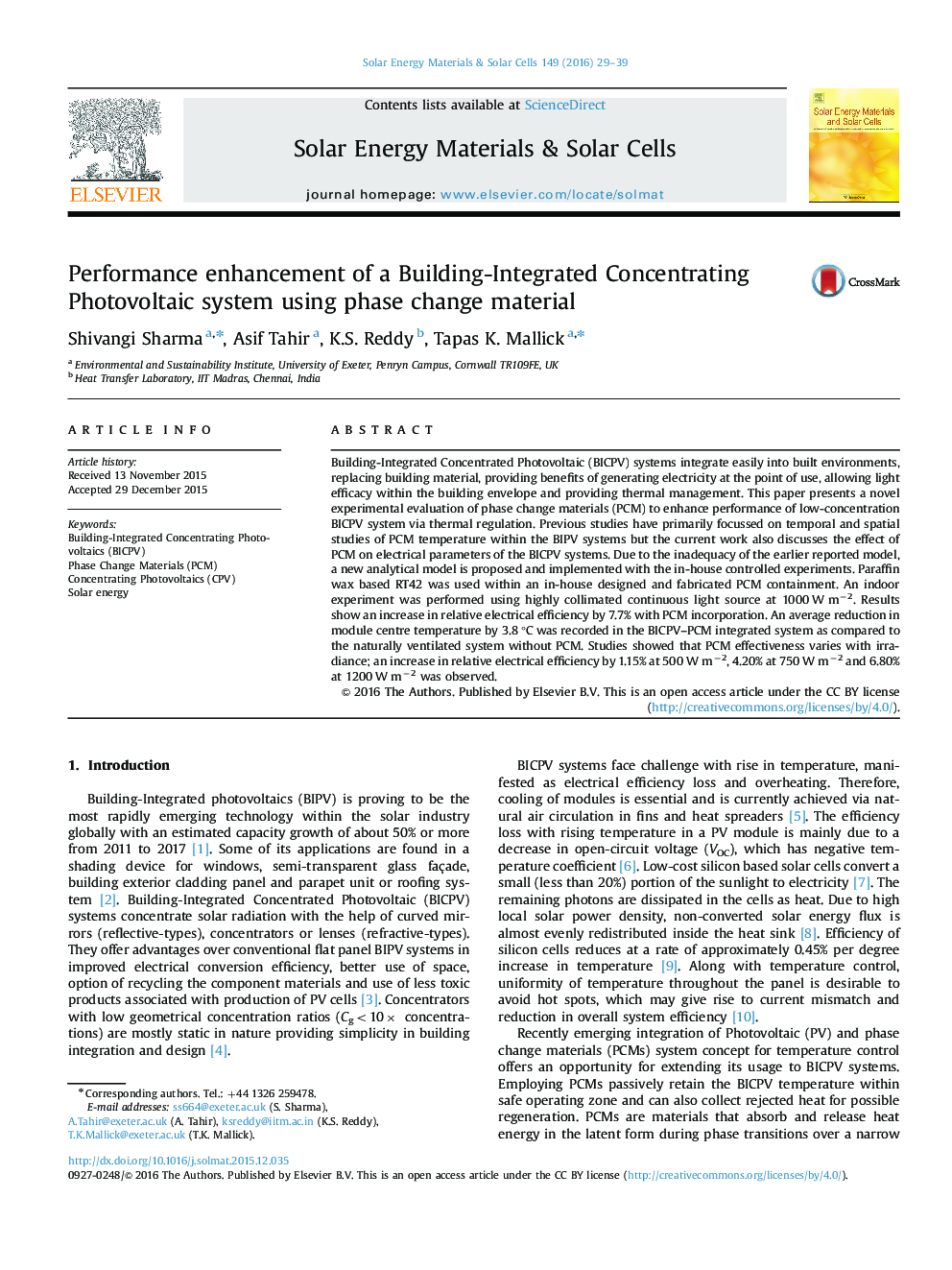| Article ID | Journal | Published Year | Pages | File Type |
|---|---|---|---|---|
| 6534723 | Solar Energy Materials and Solar Cells | 2016 | 11 Pages |
Abstract
Building-Integrated Concentrated Photovoltaic (BICPV) systems integrate easily into built environments, replacing building material, providing benefits of generating electricity at the point of use, allowing light efficacy within the building envelope and providing thermal management. This paper presents a novel experimental evaluation of phase change materials (PCM) to enhance performance of low-concentration BICPV system via thermal regulation. Previous studies have primarily focussed on temporal and spatial studies of PCM temperature within the BIPV systems but the current work also discusses the effect of PCM on electrical parameters of the BICPV systems. Due to the inadequacy of the earlier reported model, a new analytical model is proposed and implemented with the in-house controlled experiments. Paraffin wax based RT42 was used within an in-house designed and fabricated PCM containment. An indoor experiment was performed using highly collimated continuous light source at 1000 W mâ2. Results show an increase in relative electrical efficiency by 7.7% with PCM incorporation. An average reduction in module centre temperature by 3.8 °C was recorded in the BICPV-PCM integrated system as compared to the naturally ventilated system without PCM. Studies showed that PCM effectiveness varies with irradiance; an increase in relative electrical efficiency by 1.15% at 500 W mâ2, 4.20% at 750 W mâ2 and 6.80% at 1200 W mâ2 was observed.
Related Topics
Physical Sciences and Engineering
Chemical Engineering
Catalysis
Authors
Shivangi Sharma, Asif Tahir, K.S. Reddy, Tapas K. Mallick,
